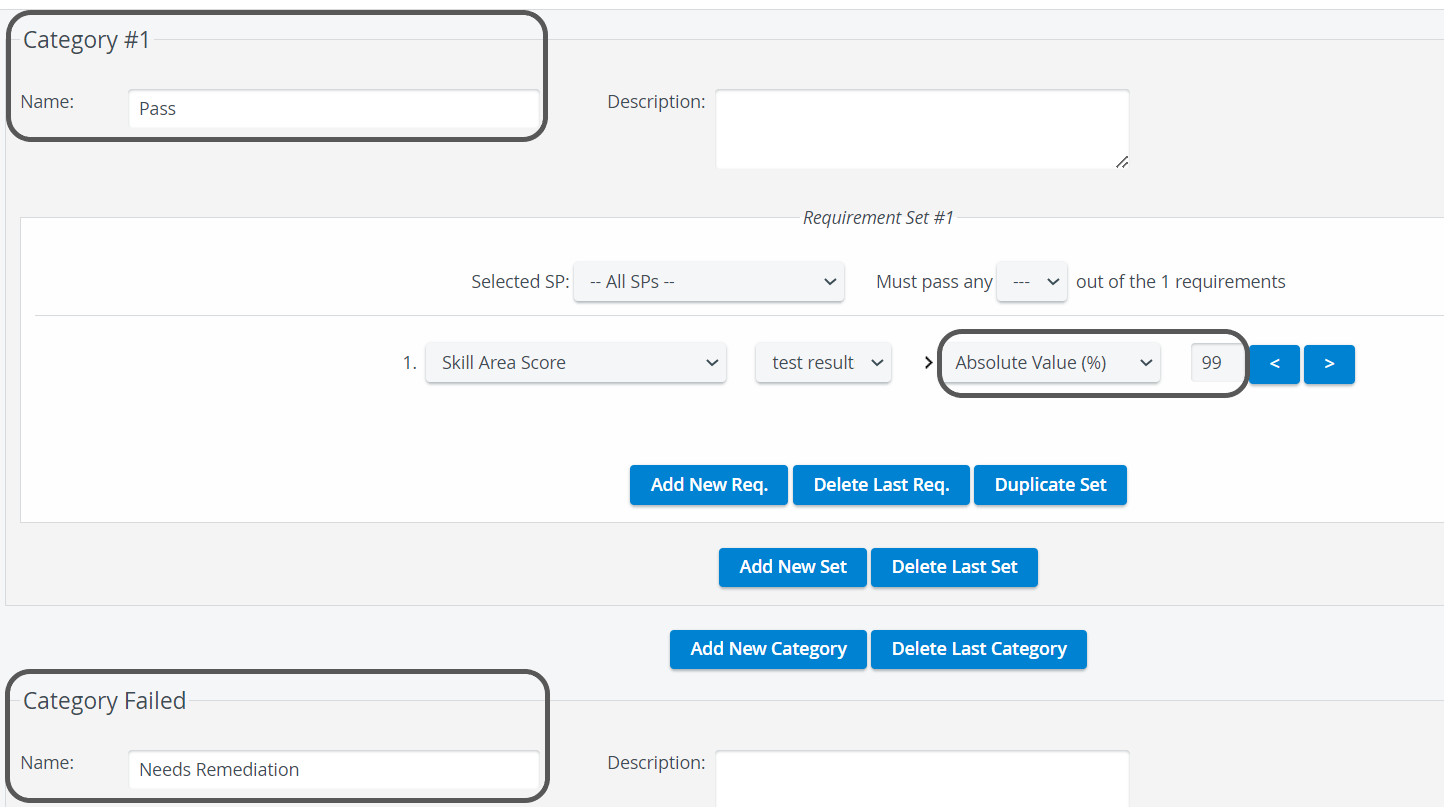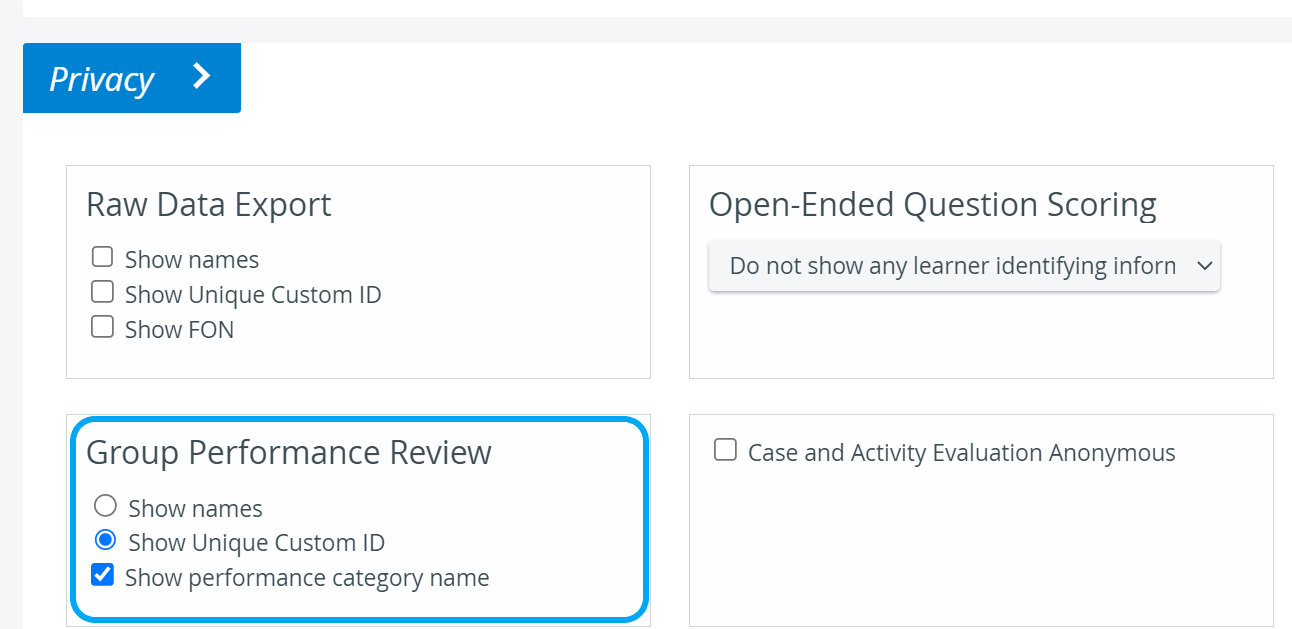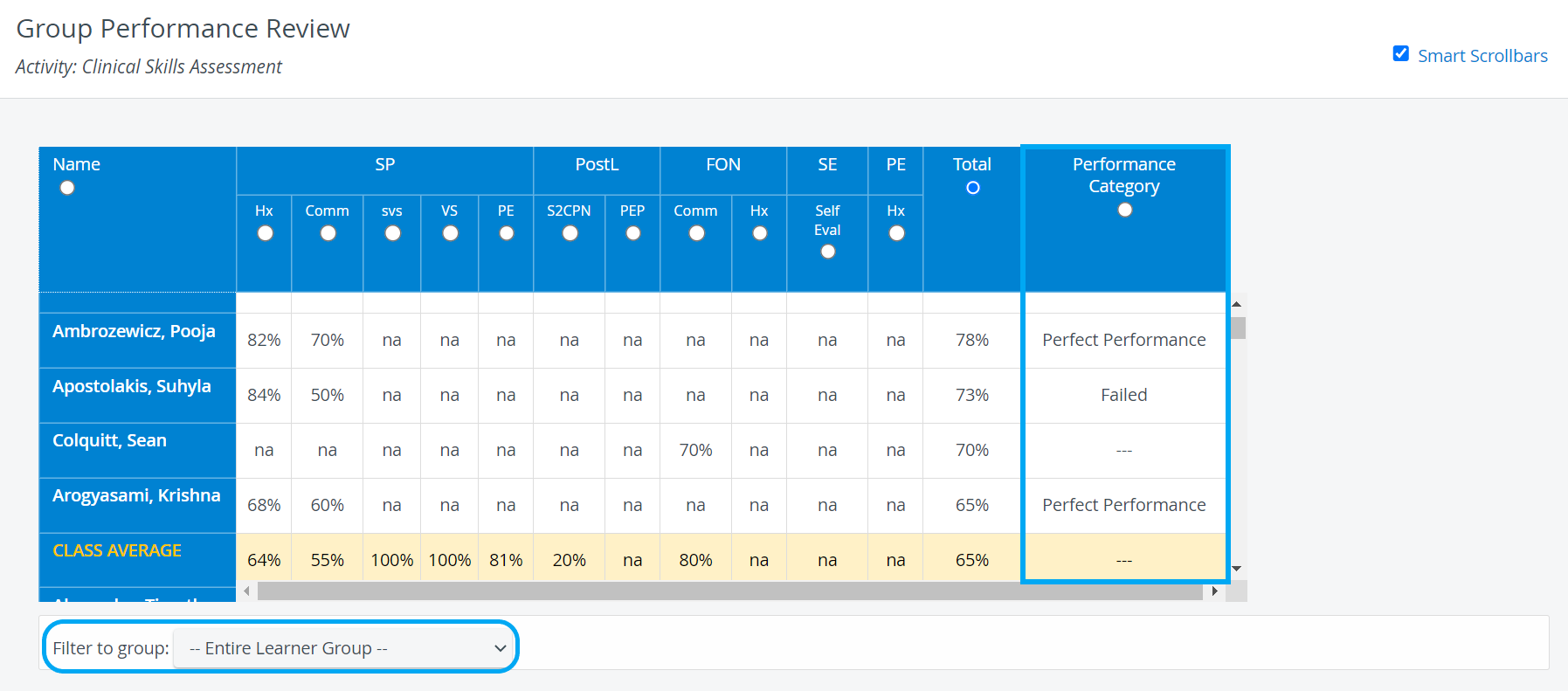- Created by CAE author, last modified on Mar 04, 2024
Performance Category Management automatically assigns a label (a performance category) and optionally its description to each Learner's overall performance in a certain Activity.
With Performance Category Setup you can create custom performance categories related to a certain Activity. Based on their performance throughout the Activity, Learners will be categorized.
In order to assign a category to the performance of each individual, you have to specify the categories for the Activity. On the Performance Category Setup page, you can
- name the categories,
- enter their description
- and specify the requirement sets.

Note
Two category tables are displayed by default: Category #1: New Category and Category Failed. Each added category is numbered sequentially and is presented in its own panel.

Important
Requirements are made up of two parts in the categories.
- Scope: the kind of score the requirement is about.
- Check Value: the value the particular score should be compared to. This could be an absolute (50%) or a relative value (class average - 2 STDEV).
The Scope and the Check Value are always separated by the > sign, indicating that the selected score should be greater than the selected check value to fulfill the requirement.
You can set the Scope for the
- Activity level,
- Case level,
- Skill area level.
(the condition the check value refers to):
- Activity Total: achieved score for the entire Activity.
- Case Total: achieved score of the given Case. Setting this condition requires selecting a Case within the event.
- Skill Area Score: achieved score of the given skill area (sections with the same abbreviation.) Setting this condition requires selecting a skill area (section abbreviation) within the event.
- Section Score: achieved score of the given skill area section of a given Case. A skill area and a Case have to be selected.
- Subset of the Section Scores in a Skill Area: achieved score in at least the specified percentage of section scores within a given skill area (identified by section name abbreviation). A skill area and a percentage value (X%) have to be specified. If the student's performance is above the check value in at least X% of the sections with the given abbreviation, the requirement is fulfilled.
- Subset of Case Totals: achieved score of all the Case totals (at least the certain proportion of Case totals), percent value has to be specified.
- Subset of all Skill Area Scores: achieved score of all skill area scores, percent value has to be specified.
- Subset of all Section Scores: achieved score of all skill area sections, specified check value has to be met at a certain proportion of skill area scores, percent value has to be specified.
See details at Scoring Learners.
A Check Value is made up of a type and a specified value:
E.g. Absolute value: direct % numerical value, the minimum requirement of the student performance
The Percentile Score column contains the learner's percentile score in the corresponding section of the Activity. This shows how many percent of the class (more exactly the learner group) performed worse than the concerned learner.
The conditions are always the minimal requirements. Fulfilled requirements are given the TRUE value, conditions, where the student performance is below the required level, will get the FALSE value.
Multiple requirements can be grouped together using logical operators and indentation.
- AND: connecting two simple conditions, both conditions have to be met at the same time in order to have the whole criterion met.
- OR: connecting two simple conditions, at least one condition has to be met in order to have the whole criterion met.
These requirement sets make up the categories assigned to student performance.
You can specify as many requirement sets as you wish, and you can have as many requirements within these requirement sets as you need.
The order of performance categories is important because Learning Space checks if the Learner fits in the first group, then in the second etc., until it finds a “match”.
The system decides with true/false method. If the Learner does not fit in Category 1, it is false, then it checks Category 2 and so on, until the answer will be true.
The order of the Categories has to be set up decreasingly.
Example 1:
The Category 1 is going to be 90%, Category 2 - > 80% etc.
According to this setup, a Learner with 75% performance will be false for Category 1, and Category2, and will be true for Category 3 (as greater than 70%).
Example 2: Workaround
-> Name Category #1 as "A - Excellent"
Selected SP: All SPs
Must pass any --- out of the 1 requirement.
- Event Total > Absolute Value (%) 91.99
This means that any Learner who has more than 91.99% as Activity total score, will be categorized under the "A - Excellent" category.
-> Name Category #2 as "B - Very good"
Selected SP: All SPs
Must pass any --- out of the 1 requirement.
- Event Total > Absolute Value (%) 83.99
This means that any Learner who has more than 83.99% as event total score, but no more than 91.99% will be categorized under the "B - Very good" category.
When reviewing reports, the performance category labels are assigned to each student based on their performance and shown on the reports page.
You can see the performance category on
- the Performance Matrix page,
- on the Grade Report page,
- and on the Skill Report page
- or on the Group Performance Review or Group performance Report by Section if set so in the Activity Reporting setup.


Related pages
-
Page:
-
Page:
-
Page:
For more information, see the Reports Module, Reports - How to pages, and the Reports Module Training Videos.